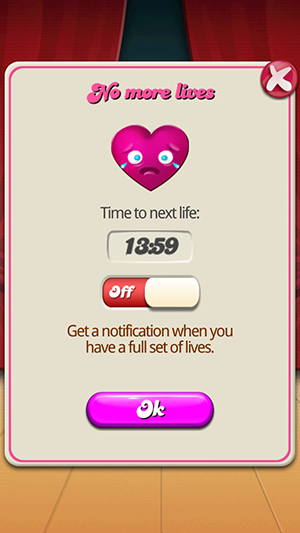I’ve decided to write this post for probably the same reason why you came to read it. What is about Game Economy Designer or Monetisation Designer? It seems that the story of freemium, in-app purchases and other aspects came really to stay. And it makes totally sense.
As a designer, I was questioning myself about the skills for this type of job.
First, let’s try to analyse what do they really mean by Game Economy Design.
In this article, published almost 2 years ago, the focus of the economy in game design was strictly in virtual currency. As we know today, the game economy expanded to free-to-play games and IAP. It’s not about virtual currency anymore. It’s a combination of real-world money and virtual goods.
The amount of examples of mobile games that have IAP is huge. In order to progress in the game, the player might have to buy some virtual goods with real money. That’s how it works. However this could be more complicated.
How to make it work great in the game not influencing totally on the gameplay?
That’s the main challenge. In order to combine money and gameplay, the designers need to pay attention to a lot of details, including the gameplay journey and price.
How to know if people are really keen to pay a certain amount to proceed in the game? And if the player doesn’t pay, is he/she able to continue playing?
So in this article I will try to show some of the patterns of game economy design like waiting, asking for friends’ help and virtual money.
But the question is: how to make it better?
I think that for IAP, it should work as different journeys for the player. Let’s take as an example the Four Bartle’s types of players:
- Killers: influence the game world or the play experience of other players
- Achievers: want to achieve everything in the game, focused in challenges and levelling up
- Explorers: discover the game world
- Socializers: create social relationships with other players
And the Four Keys for Fun, from Lazzaro:
- Hard Fun: personal achievement, strategy
- Easy Fun: related to curiosity, exploration
- Serious Fun: excitement, relaxation
- People Fun: amusement, cooperation, collaboration
So, let’s try to combine this with the “Game Economy Patterns”:
 Waiting…
Waiting…
Most of the things that some games do is that they make you wait. You wait. And wait. If you don’t buy more lives, you will need to wait. Nice. That’s good for games that are quick and simple. Fast feedback, fast achievement. So points and levels are important game design elements to invest. It matches serious fun and achievers.
A little help from your friends
If you don’t pay, you will need to ask your friends to give you something in return. It’s like showing to everyone that you need people’s help. Your experience becomes other people’s experiences, because you will depend on them. It could work for games that have leaderboards. It matches people fun and socializers.
You don’t have virtual money anymore
You can buy with real money! So if you need more goods and superpowers, you can buy them. Fantastic! It could be good for players that like to customise the game or to have more freedom to manipulate the elements of the game. It matches hard fun and easy fun. It could also be work for explorers and “killers”.
However, again the game could get boring after a time if there is no element new, or that could add more value. For example, maybe a new challenge in some games could influence achievers to play more. Or the addition of more social features could be good for people that love to compete with their friends. It’s a way to say that games are quite “organic”. For this reason, data is one important element to add in the combination in the Game Economy. It is important to know what the players are doing and measure it.
No wonder some of the skills necessary for the role in Game Economy Designer involved data analysis and deep knowledge in Economics.
For example, most of the job posts that I’ve found in my Linkedin asked the candidates to at least:
1- understand how a game works as a service
2- develop purchase drivers
3- data-driven recommendations on design
4- define metrics
For me it’s a kind of combination with Game User Experience with Economics. But the most important thing is to think about the USER. Players will pay for something that MATTERS for them and not what is imposed. It’s hard to play games that force the player to pay a certain amount to proceed. That shouldn’t happen. The idea of paying to play is not that new. Remember fliperamas? We had to buy coins to play. It’s a bit like that. But everything could get wrong. If the player is “forced” to pay something to proceed in a game and there is no other way, this is not good.
I’m not familiar with Economics theories, but they might have something to add! :) That’s a work in progress.
Read more
http://getinmedia.com/careers/economics-designer
http://www.washingtonpost.com/blogs/wonkblog/wp/2012/09/28/the-economics-of-video-games/
photo credit: what kind of gift can I buy with $11.52? via photopin (license)

